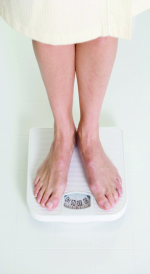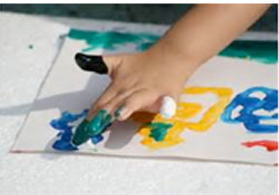 With the holidays and photo taking season coming up, it’s not too early to start taking some steps toward organization. This will make it easier to retrieve photos, create cards and books (think gifts).
With the holidays and photo taking season coming up, it’s not too early to start taking some steps toward organization. This will make it easier to retrieve photos, create cards and books (think gifts).
Because organizing the past can be overwhelming some people choose to start with the current. My personal choice is to do the old ones as well. Decide whether you want to go back and clean up all of your old photos OR do you want to start from now.
Download photos from your phone, camera and tablet frequently. If you lose your phone- your photos could be gone forever.
There are many software programs, some are great for sharing, some are great for printing cards, invitations and pretty much whatever you want, others not so much. Choose a program that meets your needs. Some of the more popular ones are: Linea, Shutterfly, Picasa, Flickr, and there are many more available your computer/laptop may already have software on it. If you are a Mac user iPhoto is good for organization.
When you are looking through your photos delete what you can, they take up a lot of space and we don’t want to use up space for bad photos.
Delete:
Some programs will allow you to tag your photos and rate them. That will help you sort them more easily if you are searching for something. This may not be necessary but it is available in some programs.
Now you are ready! You can easily create and print your cards, photo books photos on canvas and the myriad of other products available.
The final step is to BACK UP, BACK UP, BACK UP.
Celebrate life’s blessings.
Opening presents sure can be fun — but dealing with the hassle of wrapping paper, tissue wrap, ribbons, and recycling trash can sometimes be the bummer at the end of the party. That task sometimes falls to me…even on my own birthday. As I turn one year older this month, I treated my family to the gift of captured moments with a professional family photo sitting. We got all of the shots we wanted PLUS which I’m sharing at the end of this post.
What kinds of gifts can YOU give this year that don’t involve packaging or plastic — and don’t take up room on shelves? Theater events, spa treatments, and special meals out are just a few ways to celebrate the good times in life with the people you love. Keep this in mind while you shop for the holidays. Ask nieces and grandparents what events (sporting or cultural) they’d like to attend in lieu of cappuccino makers and electronic gadgets. Cousins could organize a bowling party instead of racking their brains for what “Suzy” wants this year for Christmas.
Now is the time to get your family on board with the idea of green gifts — like time spent together — rather than purchased goods. If the idea of intangible gifts is too big a leap (this year) then at least make sure to share your want-list. Don’t be shy telling people (friends, family, co-workers) what you’d really like. In this economy, no one wants to throw good money after bad. Happy Holidays.
 As I was driving the other day listening to NPR, I heard a provocative story suggesting that researchers should stop spending millions of dollars comparing the content of all the various diets programs on the market today. Instead, they should focus their studies on how to effectively change behaviors associated with weight gain. As a Professional Organizer, this piqued my interest.
As I was driving the other day listening to NPR, I heard a provocative story suggesting that researchers should stop spending millions of dollars comparing the content of all the various diets programs on the market today. Instead, they should focus their studies on how to effectively change behaviors associated with weight gain. As a Professional Organizer, this piqued my interest.
Featured on the NPR program “Here And Now,” was Carey Goldberg, health reporter for WBUR in Boston, commenting on a recent paper published in the Journal of the American Medical Association. Analyzing different well-known diet programs, the report concluded that the various diet programs — on average — are equally well suited for losing weight. Therefore, one could pick and choose any one of the diet programs that looks appealing to them and get pretty much the same result.
If the report concludes that it doesn’t matter what diet program you choose for losing weight, then why are these programs ineffective for so many participants over time? Why is it so common that dieters gain back the weight they lost soon after they stop dieting? The key is “adherence” – sticking to healthier eating habits over time. Instead of continuing to spend millions looking at and worrying about the specific content of the diet programs on the market, this report suggests that we need to understand the context of the individual dieter, and therein lies the key to adherence. We need to shift the focus from simply counting calories and carbs, and look toward behavioral change and how to make those changes last – forever.
Behavioral scientists studying the effects of dieting over time look at factors such as why people crave different foods and how environmental factors, such as family traditions, affect their dietary preferences. They found that the one common factor that undermined the best of intentions around dieting and healthier eating habits is stress. The NPR story stated that, “researchers often hear dieters say that they want to lose weight, but life gets in the way.” The root problem is woven in the feelings experienced, when “life gets in the way” and that is a behavioral issue – not a nutritional one.
Just like the dieting industry, the organizing industry has zillions of products to choose from, and still people feel overwhelmed and stressed. For many, the products don’t deliver on their promises of freedom and ease over time. Before clients call us, many of them have been on a number of “organizing diets” and have not reached or maintained their organizing goals over time. Sleek new organizing products and best intentions are easily de-railed when “life gets in the way.”
As Professional Organizers, we know what makes the biggest difference to someone staying organized over time. It isn’t simply which storage bin we use but rather, that the person develops the habit to actually use the bin over time. All the different storage bins, calendar systems, time management tips, electronic gadgets, apps, etc., do not ensure that one will achieve a state of organization that lasts. They are only the tools we use to create an environment that supports an organized life-style. The actual change towards living an organized life comes from within the individual. Effective behavioral change resets our personal compass, and points us toward our goals and aspirations. “Adherence” to these behavioral changes, ensures us it will last forever!
So the point of this story is…If you want to lose weight, don’t stress about which diet program to choose. Choose the one that appeals to you since they all, on average, work about the same. If you want to keep the weight you lose off for years to come, work with a behavioral specialist to create your unique practices of adherence that promote healthier eating habits. And, if you want to decrease the stress of “life gets in the way,” create an environment that supports your new healthier habits over time — then call one of us. Professional Organizers love supporting behavioral changes that last forever.
http://commonhealth.wbur.org/about/carey-goldberg
 Your child is at summer camp. If it’s a day camp, he or she has been bringing home art projects galore. What on earth do you do with them?
Your child is at summer camp. If it’s a day camp, he or she has been bringing home art projects galore. What on earth do you do with them?
While you are undoubtedly proud of your child’s work, now is a great time to decide which papers and projects to keep (or not). Decide with your child ahead of time an appropriate number of pieces that you are going to keep. Be flexible. If you find one or two over that number, don’t worry – but you probably should not keep all of them!
Have your child choose which pieces of artwork they would like to display. Turn them over and put your child’s name and the current year’s date on it. String a piece of fishing line between two hooks on a wall. I recommend Command Hooks which do not damage walls and are easy to apply (and remove). Find some colorful clothes pins (can often be found at a dollar store) and clip the artwork to the line. You now have created a rotating art gallery.
What to do with the artwork or papers you are not yet ready to toss? Again, label the reverse side with your child’s name and the current year. Find an appropriate size box that will fit the size papers you have that is preferably not more than 5” in height. Place all of the “keep” papers in the box. On the very top of the pile of papers, put a page with the following information on it: his or her name and the name of the box (Camp Memories / Artwork by…) and the year. Encourage your child to draw a label for the front of the box. Store the box away either on a closet shelf or under the bed.
Next year, repeat the process but first, sort through the prior year’s camp artwork. Are there some in there that are no longer as precious as they seemed last summer? It is ok to get rid of them (as long as you both agree). Add to the top of the pile this year’s collection and top it with your child’s name and the current year.
You now have a jump start on the school year…a way of displaying your child’s art and papers that will undoubtedly collect in the bottom of his or her backpack throughout the year. Just repeat these steps throughout the year and you will have the continuation of a great memory box.
 For most of us summer means taking time to recharge our batteries and spend quality time with family. Vacation is also about choosing what we want to do on our own timeline. Whether you are going away for vacation or enjoying a ‘staycation,’ quiet time is a great opportunity to get organized in small ways that make a big impact when the rat race begins again in the fall.
For most of us summer means taking time to recharge our batteries and spend quality time with family. Vacation is also about choosing what we want to do on our own timeline. Whether you are going away for vacation or enjoying a ‘staycation,’ quiet time is a great opportunity to get organized in small ways that make a big impact when the rat race begins again in the fall.
Whether you are sitting on a beach, in a plane, or on your back deck, here are 10 ways to spend some of those lazy hours:
1. Organize your cell phone. Delete unwanted items and add missing contacts. Add names you call often to save time. Even if you don’t have the phone number, you can add the number later.
2. Learn how to truly use your phone. Do you have a new phone and not know how to use it to its fullest potential? Take the time to search around and focus in on what you want to know. If you have a smart phone, go on the company’s website and find answers.
3. Take your ‘reading pile’ when you travel. We all have a reading pile, so carry your accumulated unread magazines and miscellaneous mail with you and throw it away as you read it.
4. Clean out your computer. If you are like me, you take your computer with you when you travel. Use the time to delete unwanted files, reorganize documents into folders, and put old files into other file folders to avoid cluttering current projects.
5. Write down your list of future ‘wants.’ Having a list of the things you want to purchase, big and small, now and in the future, makes it easier to avoid spending money on things you don’t need and really can’t afford. Keep the list on your smartphone under Notes.
6. Do a ‘brain dump.’ When we’re away from home, it doesn’t mean our minds suddenly slow down. A brain dump means writing down everything that’s on our minds so we don’t forget what’s important. Putting our mental ‘lists’ in writing also helps us organize our thoughts.
7. Cut down on calls from telemarketers. Call 1-888-382-1222 and register all the phone numbers you don’t want telemarketers to use. You can also register online at www.donotcall.gov, but calling is easy. Your registration will not expire.
8. Opt out of credit card offers. Call 1-888-5-OPTOUT (1-888-567-8688) to get your name and address removed from the main consumer credit reporting agencies mailing lists: TransUnion, Experian and Equifax.
9. Clean out your purse/wallet/briefcase. How much do you REALLY need to carry with you? Most of the time, we aren’t in a third world country where the conveniences of life aren’t readily available. Don’t burden yourself by carrying around everything you or anyone else needs to survive every catastrophe.
10. Schedule fun stuff and down time. Place entries on your calendar for family time, long weekends, vacations, and personal projects to ensure you’ll take the time to do it.
Finally, did you know the word leisure comes from the Latin licere, meaning ‘to be permitted’? Many of us have to permit ourselves to be leisurely so make sure you take time off and use a little of that time to get organized so you have time for the joyful things in life!
“Joy is not in things: it is in us.” Richard Wagner, German author
What reaction comes up in you when you hear that phrase? “I’ll think about that someday–in the distant future.” “I’m too young to bother with that stuff.” “That’s for people with problems I don’t have yet—thank God.” “I wouldn’t know where to begin.” “I don’t have any affairs to get in order!”
Do you have children under your care? Are you responsible for an aging relative, in whole or in part? Is there someone with disabilities in your life? Do you feel uneasy when you hear of a catastrophic event happening to someone younger than you? Do you treasure your independence? Do you own a home and/or things that are special to you? Do you do everything legally within your power to minimize your annual income taxes?
If you answered “yes” to even one of these questions, then starting now to get your affairs in order might make sense for you.
We usually associate getting our affairs in order with legal documents and professional experts such as wills, powers of attorney and advance directives, lawyers, accountants and financial planners. While these documents and experts certainly play important roles in your well-ordered affairs, just making a few basic lists yourself can be a useful start:
Still feeling daunted? You might consider enlisting the help of a professional organizer to get your affairs in order. Professional organizers are experts at helping people sort through quantities of papers and objects, separate the important from the inessential, and arrange useful objects and information in systems that are easily accessed and used. Getting your affairs in order is just a process for capturing the essential information about you as a person and what you own, in a form that can be used readily by others if you become unable to communicate, along with legal documents that clearly express how you want yourself and your possessions to be handled. You can do this, and an organizer just might provide you the support you need to get started!